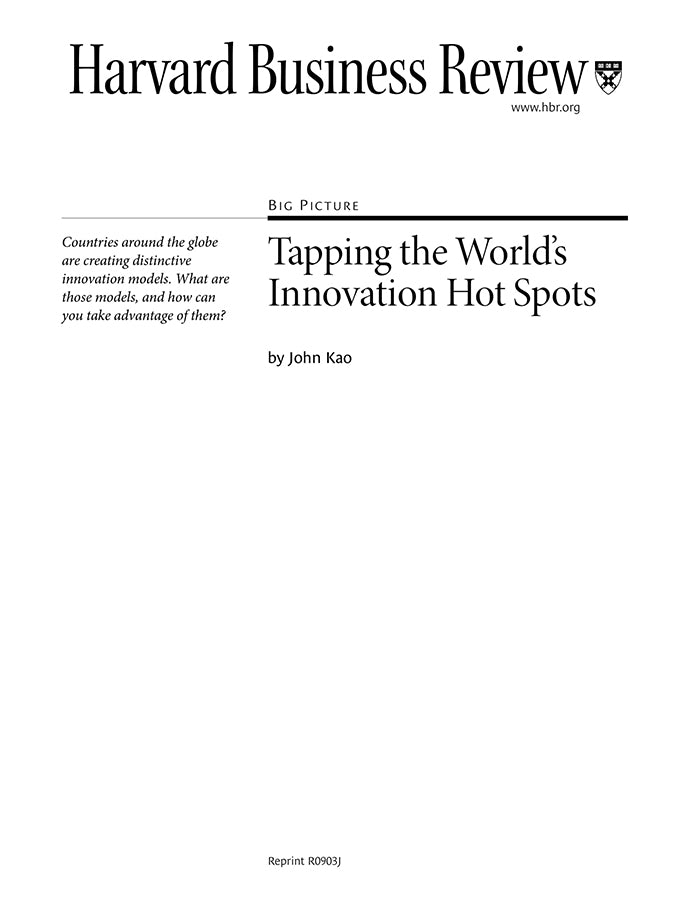Tapping the World's Innovation Hot Spots
受取状況を読み込めませんでした
Countries around the world are putting innovation at the top of their agendas. As a result, companies now have access to a global market for talent, capital, tax credits, and regulatory relief. Before setting up a research laboratory or a marketing office in one of the world's innovation hot spots, organizations must consider which of the emerging innovation models best suit their requirements. An astute company can also blend elements of each model in a systems integration approach. In the focused factory model, countries concentrate their resources. Singapore, for instance, plans to increase funding for R&D in life sciences, clean technology, and digital media, and to provide benefits such as tax relief to attract companies interested in conducting research in those areas. GlaxoSmithKline and Novartis have already begun doing so at the biomedical research center Biopolis. Countries adopting the brute force model hope to generate innovations by marshaling massive amounts of labor and capital. China, for example, is increasing funding for 10 universities in order to produce many specialists in every area of science and technology. The goal of the Hollyworld model is to create the right environment for innovation by assembling a critical mass of skilled individuals. India, for example, is partnering the best graduates of its universities with Indians who have trained at educational institutions in the West. Several countries have developed large-scale ecosystems combining funding bodies, research institutions, and business and academic collaboration. Finland's innovation system, for instance, is bolstered by strong governmental stewardship and the involvement of public and private players. Aalto University, scheduled to open in the autumn of 2009, will exemplify the country's holistic approach.
【書誌情報】
ページ数:12ページ
サイズ:A4
商品番号:HBSP-R0903J
発行日:2009/3/1
登録日:2012/3/28


